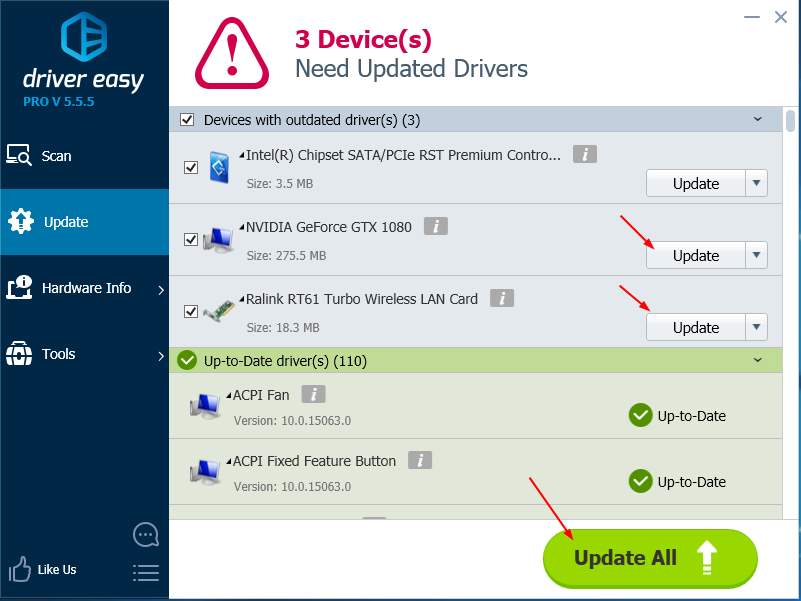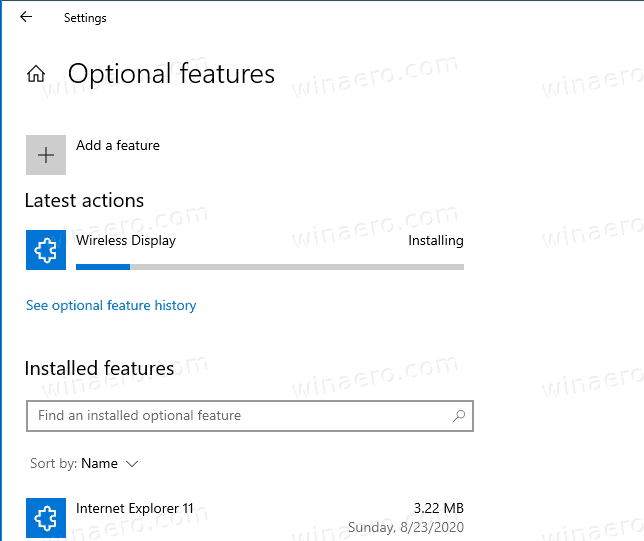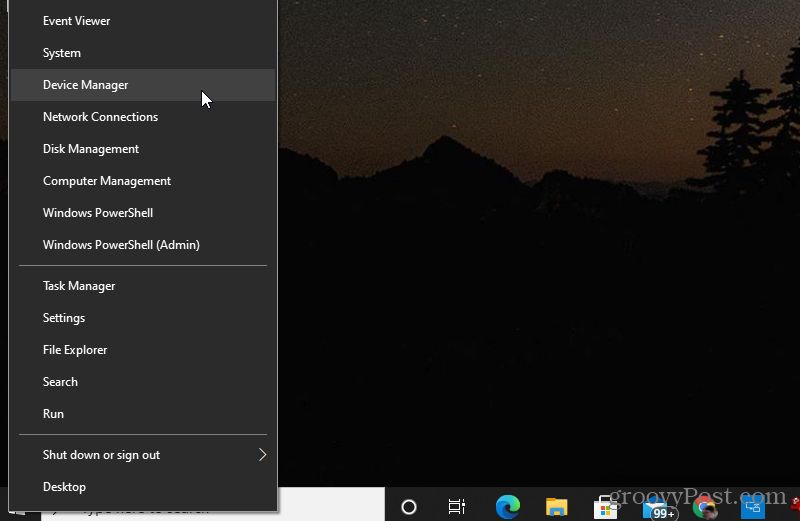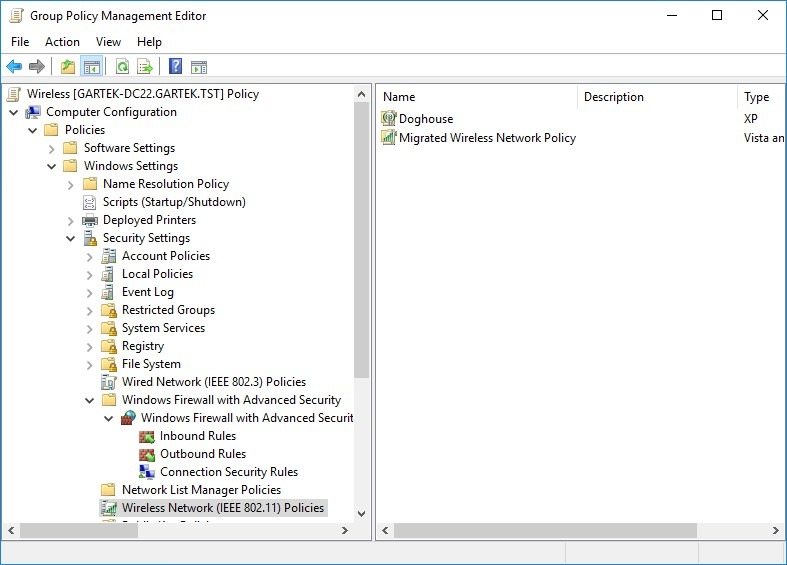How To Set up Miracast And Troubleshoot Its Problems In Windows 10
Miracast enables certified (Miracast-certified) devices such as laptops, smartphones, and tablets to communicate with TVs, monitors, and projectors. Its main purpose is to replace cables and wires from the device to display. It can be thought of as an 'HDMI over Wi-Fi' tool. Miracast allows users to broadcast photos, music, videos and other media from mobile devices and computers to larger screens (thus, it allows you to see your device's screen content on a bigger screen).
Miracast is a similar technology to AirPlay and Chromecast, however, these technologies are somewhat different. Miracast technology is built upon Wi-Fi Direct, which allows two devices to form a direct P2P (peer-to-peer) wireless connection and discover each other without a wireless router. It creates its own network on which paired devices can share data. As mentioned, Miracast is rather like an HDMI connection without physical cables that allows users to pair devices.
Later Android smartphones and Windows computers with Intel chips have access to Miracast - if you have a system that is a few years old, you will probably have access to it. Today, this technology is often built-in - most Smart TVs, Amazon Fire TV, Android TV, Roku and other devices support Miracast. There are many Miracast receivers, however, not all work properly, if at all.
If you upgraded your computer to Windows 10 from Windows 7 or earlier: In Windows, click the Action Center icon on the taskbar, and then click Connect. If a Searching for wireless display and audio devices message displays, your computer supports Miracast. Intel WiDi was based on the Miracast. standard for wireless display capabilities. This standard is natively supported in Windows® 10 and Windows 8.1. and may be used to accomplish wireless display without additional software. Get current Miracast drivers for your PC Windows 10. Step 1: Download Intel Driver Update Utility Tool from Miracast Driver Download Page or just go to Official Intel Site. Step 2: Locate the download folder and click on the.exe file to run it. I tried to install this driver but that was impossible on my windows 10 v 1703 (Creators update) I'm also using the latest windows version, but it worked for me. The screen did turn black right after installation, but after a quick restart, the driver was working perfectly.
To use Miracast, you need both devices to support it. To broadcast to the screen of a device, chipset, operating system, and driver support is needed. For Windows users, you must have Windows 8.1 or Windows 10. Older versions need third-party apps to support Miracast.
In the guide below, we show how to set up Miracast for Windows 10 users. Also, how to troubleshoot the most common problems relating to this technology.
Table of Contents:
It is recommended to run a free scan with Malwarebytes - a tool to detect malware and fix computer errors. You will need to purchase the full version to remove infections and eliminate computer errors. Free trial available.
How To Check Miracast's Availability
First, check if Miracast is supported on your computer. Press the Windows key + R or right-click Start and select 'Run' from the contextual menu.
In the Run dialog box, type the name of a program, folder, document, or Internet resource - Windows will open it for you if it is valid. Type 'dxdiag' and press Enter or click 'OK'.
The DirectX Diagnostic Tool will appear. This tool reports detailed information about DirectX components and drivers installed on your system. Find the 'Save All Information' button and select where you wish to save the text file.
Open the saved file and you fill see detailed information about your system. Find 'Miracast' under 'System Information' and check if it is available.
How To Set Up Miracast
If you have a TV or other device that supports Miracast, then simply turn it on. If your display device does not have the built-in Miracast support, then you need to plug a Miracast adapter (such as Microsoft Wireless Display Adapter) into your device.
In Windows 10, the screen mirroring feature can be found in Action Center among other Quick settings. Click the Notification area button on the Taskbar (it is placed near the date and time) and click the 'Connect' button. If you do not see the 'Connect' button, click 'Expand' to view more settings.
A list of available Miracast devices will appear. Click the device name you wish to connect to and the connection process will begin. You may need to enter a PIN to verify that a connection you are trying to establish is secure, or simply to complete the connection on your display device. You can also change the projection mode by choosing between monitor extensions, mirroring, and disabling primary PC display. If you want to mirror/broadcast only the primary screen, select the 'Second-Screen Only' option.
If there are no available devices displayed, you might want to add a device using Windows settings. Type 'bluetooth' in Search and click the 'Bluetooth and other devices settings' option.
Now click the 'Add Bluetooth or other device' button.
Select the 'Wireless display or dock' option and see if it finds the device you want to connect.
Update Display And Network Adapter's Driver

Install Miracast Windows 10 Tv
If Miracast is not working, update your drivers. Device driver is software that informs the operating system and other software how to interact with particular hardware. It is rather like a translator between software and hardware, since they often are created by different manufacturers, companies, or people. The driver facilitates smooth communication between hardware and software. In most cases, computers are unable to send and receive data correctly without drivers. If the appropriate driver is not installed, the device might not function properly. To update Display adapter and Network adapter driver, use Device Manager. To open Device Manager, right-click the Start button and select the 'Device Manager' result from the contextual menu, or type 'device manager' in Search and click the 'Device Manager' result.
In Device Manager, you will see a list of devices connected to your computer. Find the 'Display adapters' category and expand it, right click your display adapter, and select 'Update driver' from the contextual menu.
You will be asked if you want to search for an updated driver software automatically or to browse your computer for driver software. If you select the first option, Windows will search your computer and the Internet for the latest driver software for your device. If you select the second option, you must locate and install drivers manually. Using this option requires having previously downloaded a driver on your computer or USB flash drive. We recommend that you select the first option - select it and follow the instructions. If first option does not solve the problem, download the latest drivers from the manufacturer's website.
Once the display adapter is up-to-date, find the 'Network adapters' category in the Device Manager's list and repeat the steps. See if this solves the problem and Miracast is now working without problems.
Snappy Driver Installer (SDI) is a powerful free driver updater tool for Windows that can store its entire collection of drivers offline. Having offline drivers gives Snappy Driver Installer the ability to have access to fast driver updates, even if there is no active Internet connection on your computer. Snappy Driver works with both 32-bit and 64-bit versions of Windows 10, Windows 8, Windows 7, Windows Vista, and also works with Windows XP. Drivers are downloaded through Snappy Driver Installer in 'driverpacks', which are simply collections (packs) of drivers for various hardware such as sound devices, video cards, network adapters, etc. It can also show duplicate drivers and invalid drivers. It separates the updates that require you to restart your computer so that they are easier to distinguish. You can download Snappy Driver Installer from here.
Check WLAN AutoConfig Service
Windows Services (also know as services.msc) are used to modify how Windows services run on your system. These services are responsible for running available programs and managing many system settings and resources. You can modify a service's settings for security, troubleshooting, and performance-related reasons. In this case, you need to check if the WLAN AutoConfig service is running and if it is a startup type set to Automatic. WLAN AutoConfig service provides the logic required to configure, discover, connect to, and disconnect from a wireless local area network. It also contains the logic to turn your computer into a software access point that other devices or computers can connect to your computer wirelessly using a WLAN adapter that can support this. To check if the WLAN AutoConfig service is running and it is a startup type is set to automatic, open the Run dialog box. Press Windows (Win) key + R, or simply right-click Start and select 'Run' from the contextual menu. In the Run dialog box, type 'services.msc' and press Enter or click 'OK'.
You will see a list of Windows services, find WLAN AutoConfig and right-click it, select 'Properties' from the contextual menu.
In the WLAN AutoConfig Properties window, find 'Startup type' and set it to 'Automatic'. Ensure that 'Service status' is running. If it is not, then press the 'Start' button to start it. Click 'Apply' and exit Windows Services. Try to restart your computer and see if Miracast is now working.
Restore Your System Using Restore Points
If Miracast stopped working after you installed software or made other changes that could affect it, we recommend you use System Restore. A restore point is a collection of important system files stored by System Restore on a given date and time. System Restore reverts everything to a saved restore point, but first, you must have one recorded. If a restore point does not exist on your computer, System Restore has nothing to revert to. To use this tool, you must have created restore points. With a created restore point, this feature will bring your system back to the previous working state, without affecting your files and data. If you have any system restore points that were created before you started experiencing problems with Miracast, you might be able to fix the problem by performing a System Restore. To restore your system, launch Run by pressing the Windows Key + R and type 'rstrui.exe'. In the Run dialog box, press Enter or click 'OK'.
In the System Restore window, click 'Next'.
If there are restore points created, you will see a list of them. Mark the 'Show more restore points' checkbox, which should display more restore points. Select the most appropriate restore point (depending on the time created, etc.) and click 'Next'.
Confirm the restore point. Your computer will be restored to the state prior to the event detailed in the 'Description' field. If you are happy with your choice, click 'Finish' and the system restore process will begin.
We hope this guide was helpful and you can now set up Miracast on Windows 10 and are able to troubleshoot common problems. If you know of other methods that solve problems with Miracast, not mentioned in our guide, please share them with us by leaving a comment in the section below.
Video Showing How To Set Up Miracast And Troubleshoot Its Problems:
Miracast question
Installing Miracast On Windows 10

regarding Miracast and really hope you can help me. I have a LGOLED55C9PLA TV which is Miracast enabled, I want to share my PC screen to my TV, I have been successful using WiFI, but my USB WIFI dongle is not powerful and my house is fully Ethernet wired, so that seems the obvious choice. As Miracast now supports Ethernet ( infrastructure ) I really want to go this way. I have not found much to help me on the internet, the only thing I found was that a connection has to be made with WiFi before using an Ethernet link, but can not find out how to do this.
I really hope you are able to offer me a solution....many thank
This article will show you how to set up and use Miracast to mirror or cast your computer screen to another screen which could be TV/Projector wirelessly. The whole process is very easy and quick to learn once. If you don’t know what is Miracast then keep reading or else you can jump to the steps directly down below
As per Wikipedia article:
“Miracast is a standard for wireless connections from devices to displays, introduced in 2012 by the Wi-Fi Alliance. It can roughly be described as “HDMI over Wi-Fi”, replacing the cable from the device to the display. The Wi-Fi Alliance launched the Miracast certification program at the end of 2012.”
Windows Operating system started giving Miracast support from Windows 8.1 version. So with Miracast, you can cast your computer screen to other monitors, TV or projector screen without any hassle. Miracast gives you opportunities to send videos in 1080p resolution with H.264 codec feature and 5.1 surround sound.

How To Check Your Device Miracast compatibility
Step 1: Open Run command box (Windows + R) and type dxdiag command, then hit OK button to run it.
Step 2: Click Save all Information button on the first tab and save the file wherever you like.
Step 3: Open the file and search for Mircast as shown in the image below. If it shows Available then you are in luck to use Miracast with your computer.
Here are the steps to use Mircast on Windows 10 to mirror your PC screen on another screen.
Step 1: Turn on the Miracast feature in your target screen if it has an in-built feature or else turns on the display adapter that you have attached to the screen via HDMI port.
Step 2: Open Settings on your computer and search for Device and choose the first option.

Note: Before it was Devices and now it is Bluetooth & Other devices, Microsoft keeps changing this setting name so be sure that you find a screen that allows you to add a device.
Step 3: Press Add a Device option and choose the Wireless display or dock option, from the list, choose your target screen or adapter name.
Step 4: To cast the screen press Windows + P and select the screen

Step 5: That’s it.
Just perform Step 4 every time you want to cast your screen to another display. We have mentioned a few tricks below that you can use if you are not getting any sound or Not supported error message when you try to use Miracast with Windows 10.
Common Solutions for Mircast issues with Window 10
- Update Device drivers
- Update WiFi drivers
- Check your computer compatibility with Wi-Fi Direct feature
- Use different Display Adapter like
Microsoft Wireless Display Adapter - Ask us in the comment section below
- Ask some expert near your location
Please let us know if you have any questions about this process in the comment section down below. We will be glad to hear from you and help you to resolve the issue.